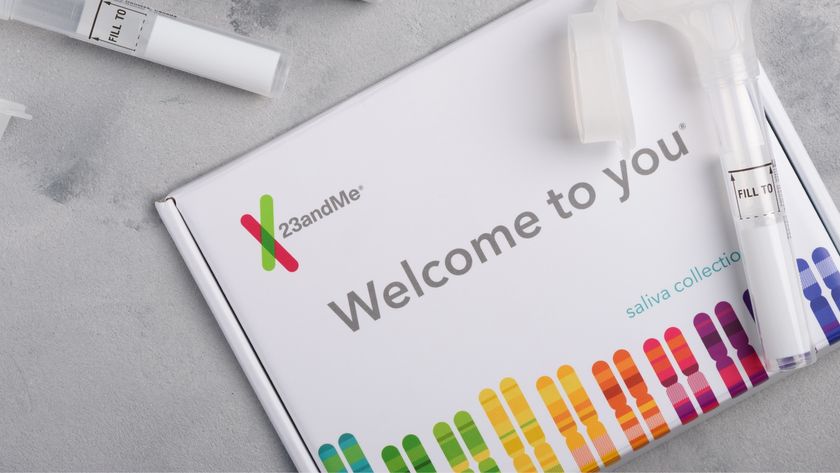FBI issues warning over student loan forgiveness scams — how to stay safe
Be careful when trying to get your loans forgiven as scammers will likely pounce on the opportunity

Now that the US Department of Education has opened up applications for federal student loan forgiveness, the FBI is warning that scammers will almost certainly use this news to their advantage.
Announced back in August of this year, the Student Loan Debt Relief Plan will provide up to $20,000 in debt cancellation for Pell Grant recipients and up to $10,000 for non-Pell Grant recipients. While this is good news for borrowers, it gives scammers the perfect lure to use in phishing campaigns and other attacks.
A similar situation occurred throughout 2020 and 2021 when scammers used stimulus checks distributed by the U.S. government to trick potential victims into giving up their passwords, Social Security numbers and other sensitive personal information. These stimulus check scams were quite successful and all manner of cybercriminals may try to deploy similar tactics using President Biden’s student loan forgiveness plan as a lure.
The perfect opportunity for scammers

According to the FBI, it is highly likely that scammers will try to defraud borrowers seeking student loan forgiveness.
One of the ways in which they might do this is by claiming to help borrowers access the Federal Student Loan Forgiveness program through emails, text messages, over the phone and even by mail.
The FBI also believes that they will create fake websites in an attempt to steal financial and other sensitive information from borrowers. By including malicious links in their emails, scammers will be able to redirect borrowers to these fake websites which often appear to be legitimate at first glance.
Even though applying for the Federal Student Aid program is completely free, scammers may try to charge potential victims or collect their personal data to complete the application process. With this information in hand, they can then commit identity theft as well as other types of fraud at the victim’s expense.
Sign up to get the BEST of Tom's Guide direct to your inbox.
Get instant access to breaking news, the hottest reviews, great deals and helpful tips.
Special Agent in Charge, Robert K. Tripp provided further insight into the kinds of student loan forgiveness scams the government agency believes may occur in a press release, saying:
“Scammers will jump at every opportunity to defraud a new pool of potential victims. The FBI typically sees this behavior when any new government aid program becomes available. The FBI is providing information to the public now to help people recognize the warning signs of potentially fraudulent activity related to the forgiveness of federal student loans. Don’t let a scammer trick you into revealing personally identifiable information or providing any type of payment. The U.S. government will not charge any type of processing fees or require any type of payment to have your federal student loans forgiven.”
How to spot a student loan forgiveness scam

In order to protect yourself from any scams using student loan forgiveness as a lure, you first need to learn to spot the signs that an email or a website may be fake.
First off, if the email or website asks for money to process your student loan forgiveness application, this is a dead giveaway it’s a scam. This is because the U.S. government isn’t charging any processing fees to apply to the program. At the same time, the U.S. government would never ask you to pay in cryptocurrency instead of dollars.
If you do happen to receive an email about student loan forgiveness, you should carefully inspect the sender’s email address. You want to be on the lookout for misspelled words and punctuation being in the wrong place. Likewise, the only domain you should see after the ‘@” symbol is .gov and government organizations don’t use .com or any other domains. You should also avoid downloading any images or files from emails that appear suspicious as they may contain malware.
In addition to email addresses, grammar and spelling errors are often found on fake websites. If you’re seeing a lot of typos or what you read on a site doesn’t make sense grammatically, it’s likely a fake.
When you do decide to fill out your application, make sure you type https://studentaid.gov into your browser to head directly to the correct website. Don’t look for Federal Student Aid in a search engine as scammers have plenty of tricks they use to get their fake websites mixed in with other search results.
In a blog post, the FTC points out that “anyone who says they can get you approved (for a fee) is a scammer”. If your application does get denied, it will include instructions on what to do next and you can also call Federal Student Aid directly at 1-833-932-3439 but expect long wait times. For those whose applications get approved, expect to receive email updates from the education department as tax documents are required to verify your income.
What to do if you fall victim to a student loan forgiveness scam

People fall victim to all manner of online scams each day and according to the FTC, 2.8 million consumers filed fraud reports with the government agency last year. Instead of beating yourself up for being deceived by a scam, it’s more important that you take action right away to limit the potential damage.
The first thing you should do is report the scam to the FBI’s Internet Crime Complaint Center as quickly as possible to protect others from being duped. You should then report any fraudulent activity to the online payment service used and contact your bank to stop or reverse any transactions. With student loan forgiveness scams in particular, you should also report them to the Department of Education using the Federal Student Aid feedback center.
Besides contacting payment services and banks, you want to preserve all of the information used in any transactions related to the scam. This means keeping prepaid cards, banking records and all phone, text or email communications. After falling victim to a scam, you should also carefully monitor all of your financial accounts and credit reports for any fraudulent activity.
Investing in one of the best identity theft protection services can’t help you after the fact but doing so will make it easier to recover from fraud or even identity theft in the future. You should consider installing one of the best antivirus software solutions on your computer as well in case a scam also tried to infect your system with malware.
Next: These predatory loan apps have been installed over 15 million times

Anthony Spadafora is the managing editor for security and home office furniture at Tom’s Guide where he covers everything from data breaches to password managers and the best way to cover your whole home or business with Wi-Fi. He also reviews standing desks, office chairs and other home office accessories with a penchant for building desk setups. Before joining the team, Anthony wrote for ITProPortal while living in Korea and later for TechRadar Pro after moving back to the US. Based in Houston, Texas, when he’s not writing Anthony can be found tinkering with PCs and game consoles, managing cables and upgrading his smart home.











